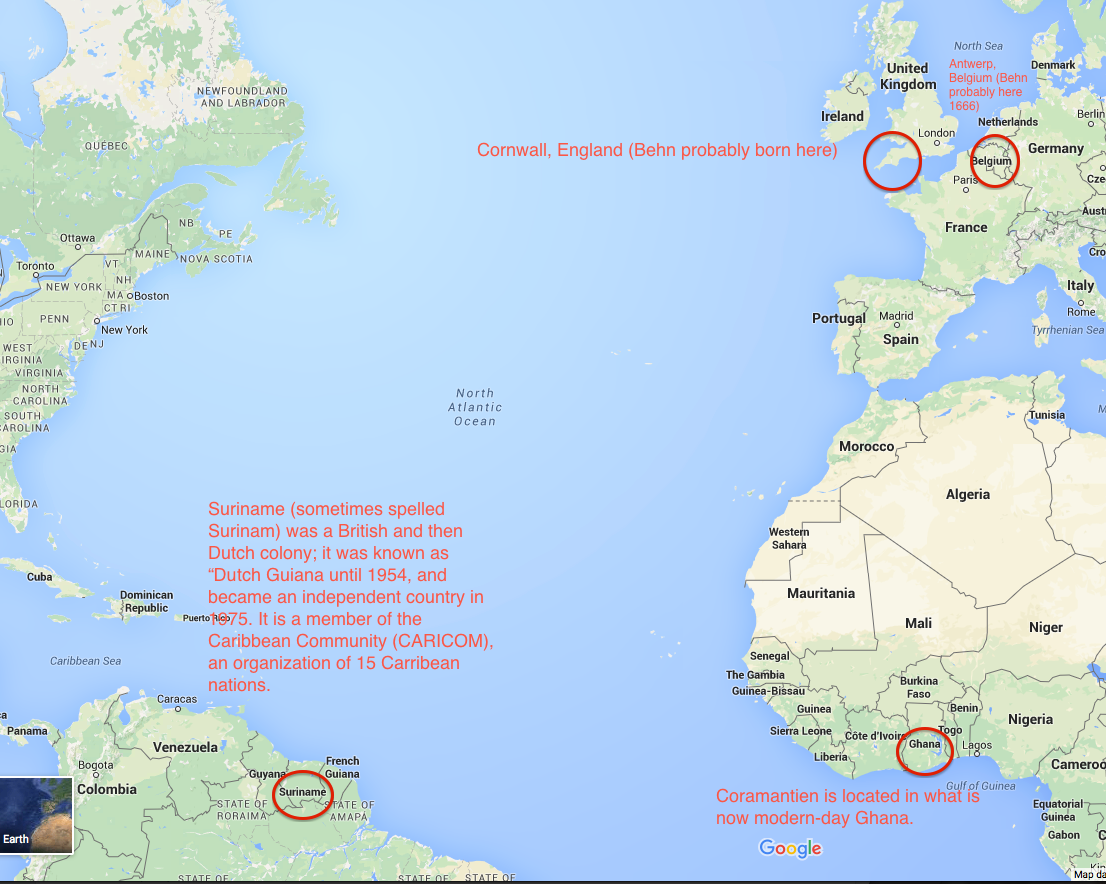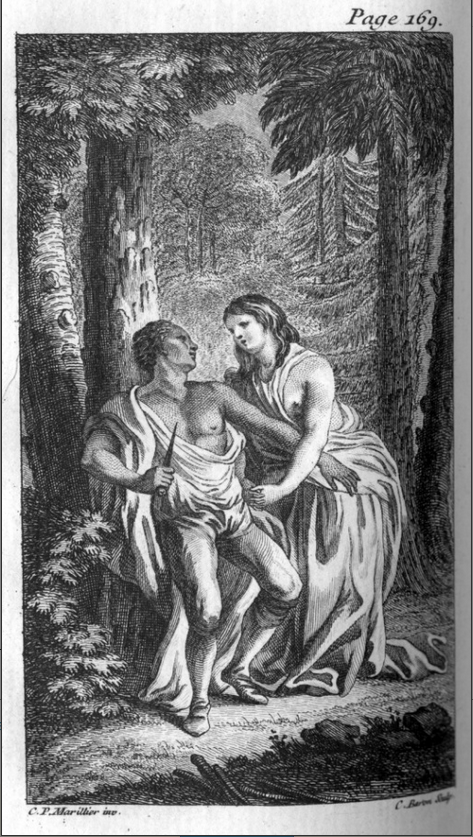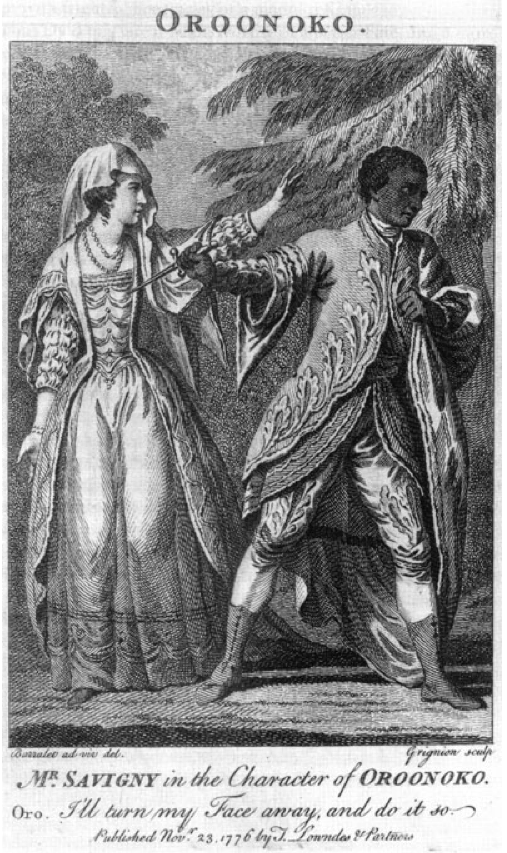
Here at the top, you'll find links to handouts and assignment sheets.
Beneath the handout links, you'll find notes for lecture and discussion in class. I'll keep the material for the most recent class session at the top; scroll down for earlier sessions.
_______________________________________
Here is a link to the syllabus: Transatlantic Novel Fall 2015 Syllabus
Here is a link to the reading (just 3 pages) you should do BEFORE our first class meeting on September 4th: Transatlantic Novel First Day Reading
Here is a link to the Discussion Starter Assignment Sheet.
Here is a link to the reading due Friday, September 18th: Excerpts from The Interesting Narrative of Olaudah Equiano (1789)
Here is a link to the First Paper Assignment: Visual Culture and the Novel, Due October 9th.
Here is a link where you can get a PDF of Amelia, or the Faithless Briton (1789), which we're reading for 10/16.
Here is a link where you can get a PDF of The Story of Constantius and Pulchera (1789), which we're reading for 10/23.
Here is a link to the Final Paper Handout.
_______________________________________
I rather like this 1920 edition of Daisy Miller with illustrations by Harry W. McVickar. The McVickar illustrated edition first appeared in 1892. But apparently the praise is not universal; see this notice for "Holiday Books" in The Literary World which is rather unkind to McVickar [bottom left column of page 443].
Interested in the revisions James made across different editions? Here's a useful source comparing the 1879 (first book edition) and the New York Edition (1909). You can also find a nice e-text edition with the illustrations here: http://www2.newpaltz.edu/~hathawar/daisy0.html
_______________________________________
Check out this Map of the North Pole from 1818.
Someone created a Prezi that includes a visual map of the novel.
Someone created a google map of Victor's travels.
Here's someone else's "Locations in Frankenstein" google map.
You might take a look at a listing of various editions of Frankenstein. Note that the first in America is in Philadelphia, by Matthew Carey, in 1833.
In 2011, the BBC had a great article providing a brief gloss of 10 different "meanings" of Frankenstein: http://www.bbc.com/news/magazine-12711091. It was prompted by the absolutely amazing National Theatre adaptation of Frankenstein, starring Benedict Cumberbach and Jonny Lee Miller, which you can see a brief clip from here: http://ntlive.nationaltheatre.org.uk/productions/16546-frankenstein
We'll talk about Frankenstein in a variety of different contexts. One is through the transatlantic (naturally) and a part of that can be seen in the way some critics have made a connection between Frankenstein and slavery/the slave trade/slave rebellion. This article is useful on these topics.
There's a wonderful online exhibition at the Bodleian Library about the Shelleys.
_______________________________________
Here's some info on Charlotte Temple's grave:http://www.nytimes.com/2008/12/13/nyregion/13trinity.html?_r=0
And here's a bit more: http://www.bartleby.com/154/1004.html
An issue of Frank Leslie's Popular Monthly from November of 1890 has a great article, "Who was Charlotte Temple," that documents various sites related to Charlotte Temple. I love the ending in particular: "Who is Charlotte Temple? Charlotte Temple is a myth."
_______________________________________
The New Yorker has a great piece on the history of dueling.
Plurisy, anyone? How about some Archaic Medical Terms.
Cross-dressing! I thought you might be interested in this story of a portrait that the British National Portrait Gallery claims is of an early transvestite: http://www.theguardian.com/artanddesign/2012/jun/06/portrait-18th-century-early-transvestite.
Finding our fiction too wild to be true? You should really know about Deborah Sampson Gannett (I didn't know about her before this!). Check out her sculpture of her and info about her here: http://www.awm.lee.army.mil/research_pages/gannett_deborah.htm or read more about her at the National Women's History Museum here: https://www.nwhm.org/education-resources/biography/biographies/deborah-sampson/ The Massachusetts Historical Society has a letter from Paul Revere about Sampson here: http://www.masshist.org/object-of-the-month/objects/deborah-sampson-soldier-in-disguise-2005-03-01 She wrote this:

_______________________________________
Here is the link to the page with the class's images.
_______________________________________
We'll be talking a bit about Robinson Crusoe in relation to this book. You might want to check out this nice gallery of illustrations of Crusoe editions through the years. http://www.camden.rutgers.edu/Camden/Crusoe/Pages/crusoe.html
Winkfield mentions the Common Prayer Book several times. It has a long history; you can see some editions here: http://justus.anglican.org/resources/bcp/england.htm
_______________________________________
Map of Equiano's travels: http://www.brycchancarey.com/equiano/map1.htm
Lots more Equiano stuff: http://www.brycchancarey.com/equiano/index.htm
I would encourage you to look at Carey's bio, which notes the concerns about recent findings regarding Equiano's possible birth in South Carolina: http://www.brycchancarey.com/equiano/biog.htm
I also think you might want to review "Where Was Olaudah Equiano Born?"
Our libary has a short film documentary about Equiano called "A Son of Africa" (you must be logged in through the UML Libraries): http://digital.films.com.libproxy.uml.edu/PortalViewVideo.aspx?xtid=49763
The Smithsonian has an online exhibit about Equiano here: http://americanhistory.si.edu/onthewater/oral_histories/life_at_sea/equiano.htm
We should also think about the increasing number of slave narratives published during this time. Here's a nice chronological list of North American Slave Narratives: http://docsouth.unc.edu/neh/chronautobio.html
The Zong was a slave ship that became the center of horror and controversy when its captain decided to throw slaves overboard (and eventually collect insurance money). There's lots more information (and sources) at this page at Understanding Slavery (The Zong Case Study). Note that the Understanding Slavery Initiative site has lots of useful primary documents on a variety of topics within the history of slavery and the slave trade (good sources for your visual culture paper!).
Mapping Oronooko
We might talk first about the primary location of the novel, which the narrator explains on the first page is
"a Colony in America, called Surinam, in the West-Indies"
You might just want to do a quick check-in with this map to make sure you understand where we're talking about: https://en.wikipedia.org/wiki/West_Indies#/media/File:Indies.PNG
The three primary locales to consider in Oronooko are England, Coramantien, and Surinam, as sort of generally depicted here:

Note that there are significant differences among these different places. For one thing, the names of the characters change as the move from one to another: Oroonoko becomes “Caesar” (why?) Imoinda becomes “Clemene” (why?).
What are some significant details about (or characterizations of) these various places? You might think about what happens in these places, how they are described, or other ways of contrasting them.
Let's talk about images:
The text of Oroonoko is incredibly descriptive, and I hope we'll have a chance to talk about many specific passages. We do have a few images related to dramatic productions of Oroonoko that I'd like to discuss. Note details that stand out to you from these images:
First, look at this image from a French Translation of Oroonoko, 1769:

Then this one from 1776:

ArtStor: Illustration for Thomas SOUTHERNE’s dramatization of Aphra BEHN’s, Oroonoko , pl. I in Lowndes New English Theatre , vol. VI (London, 1776), p. 83: Mr. Savigny in the Character of Oroonoko
Here's another from 1791:

This print is an illustration to act v, scene iii of Southerne’s stage adaptation; more info here: http://collections.vam.ac.uk/item/O136801/oroonoko-or-the-royal-slave-print-smith-a-e/
Oroonoko Digital Collection: http://dcc.newberry.org/collections/aphra-behn-oroonoko-slavery-and-race-in-the-atlantic-world
Here's an image promoting a 1776 performance of Oroonoko.
Here's an outline with images regarding Oroonoko and Behn.
A Dutch museum has a useful exhibit on the history of slavery in Suriname, 1700 - 1830
The Atlantic Slave Trade and Slave Life in the Americas: A Visual Record is an exhibit from the University of Virginia. There's a page of thumbnails of their images focused on the Middle Passage here: http://hitchcock.itc.virginia.edu/Slavery/return.php?categorynum=5&categoryName=Slave%20Ships%20and%20the%20Atlantic%20Crossing%20%28Middle%20Passage%29
And you can do a search or select a category here: http://hitchcock.itc.virginia.edu/Slavery/search.html
I'm hoping to explore some new and different territory this semester. Here are some big-picture ideas that will get us started and probably be recurrent motifs throughout the course:
"The Novel" -- just what do we mean?
Here's a definition/discussion: http://www.nvcc.edu/home/ataormina/novels/history/define.htm
Of course, there are some different opinions on when it started, as you might learn from this article in the Guardian here: http://www.theguardian.com/books/booksblog/2010/jul/23/novel-centuries-older
I'm also a big fan of writer, critic, and historian Jill Lepore's work; you might enjoy her New Yorker piece on how the history of the novel is intertwined with the history of history here: http://www.newyorker.com/magazine/2008/03/24/just-the-facts-maam
You might take a look at this great visiualization -- Genres in North American Publishing, 1639 - 1807 -- to think about what publishing looked like in the past.
The Library of Congress has a nice exhibit titled "John Bull versus Uncle Sam" that includes images of a lot of interesting artifacts related to transatlantic authorship.
A 1676 map of America by John Speed: http://www.philaprintshop.com/images/speedamer.jpg
"A New Map of American from the latest observations" from 1721. John Senex. http://www.philaprintshop.com/images/senexwhemi.jpg
1800 map of North America: http://maps.bpl.org/id/13066
Folks who are interested in Jane Austen have mapped where her novels are set. Check it out: http://www.jasna.org/info/maps.html
You can also look at maps through the lens of litertaure at Placing Literature: http://www.placingliterature.com/home
Interested in something other than where a book happens? How about where a book was written? Here's a map of NYC places where books were written: http://ny.curbed.com/archives/2012/05/03/nyc_buildings_where_great_literary_works_were_written.php
Here is a map that provides a useful Overview of the Slave Trade out of Africa from 1500 - 1900.
Here are some useful background sources:
A list of significant facts about the slavey trade: http://www.gilderlehrman.org/history-by-era/slavery-and-anti-slavery/resources/facts-about-slave-trade-and-slavery
To get a sense of direction and volume of the trade, take a look at this map: Volume & Direction of the Transatlantic Slave Trade
History of the transatlantic Slave Trade: http://www.liverpoolmuseums.org.uk/ism/slavery/
Men in the Young Republic is an online exhibit by the American Antiquarian Society (AAS) focused on the period from the American Revolution to the Civil War.
Beauty, Virtue and Vice: Images of Women in Nineteenth-Century American Prints is an online exhibit at the AAS focused on images of women in 19th-century prints
Map of Equiano's travels: http://www.brycchancarey.com/equiano/map1.htm
Lots more Equiano stuff: http://www.brycchancarey.com/equiano/index.htm